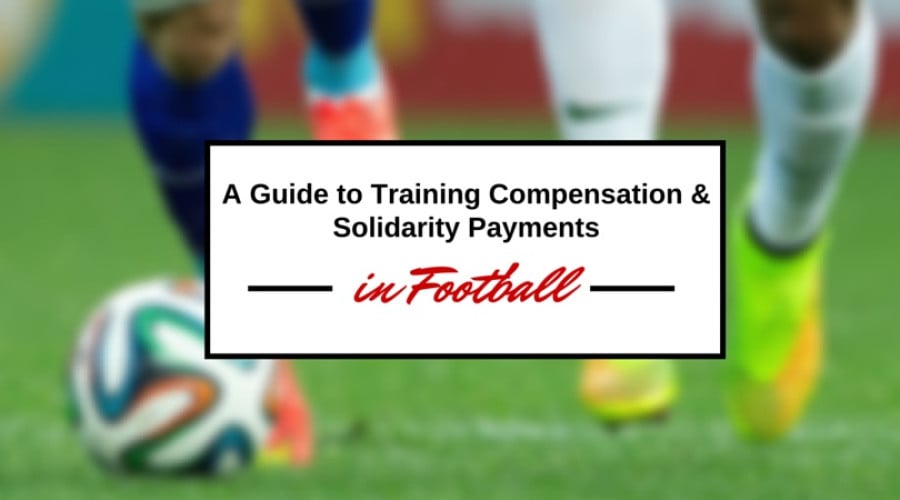A guide to training compensation and solidarity payments in football

The term “solidarity payments” is commonly used to describe distinct regimes for the distribution of money within the football community, including:
- Sums payable to clubs involved in a player’s training, upon a player registering for the first time as a professional player, or upon the international transfer of a player before the end of the season of his 23rd birthday, calculated by reference to a specified formula; and,
- Sums payable to clubs involved in a player’s training and education, upon the international transfer of a player (prior to the expiry of his employment contract), calculated by reference to the amount of the transfer compensation.
This guide focuses on these two regimes, which are governed respectively by Articles 20 and 21, and Annexes 4 and 5, of the FIFA Regulations on the Status and Transfer of Players (“RSTP”).1 It does not address the domestic rules that may apply to the movement of young players between clubs belonging to the same national association: see for example the rules relating to the Elite Player Performance Plan.
Article 20 RSTP is entitled “Training compensation” and provides as follows:
“Training compensation shall be paid to a player’s training club(s): (1) when a player signs his first contract as a professional, and (2) each time a professional is transferred until the end of the season of his 23rd birthday. The obligation to pay training compensation arises whether the transfer takes place during or at the end of the player’s contract. The provisions concerning training compensation are set out in Annexe 4 of these regulations.”
Article 21 RSTP is entitled “Solidarity mechanism” and provides as follows:
“If a professional is transferred before the expiry of his contract, any club that has contributed to his education and training shall receive a proportion of the compensation paid to his former club (solidarity contribution). The provisions concerning solidarity contributions are set out in Annexe 5 of these regulations.”
The principal similarities between the two regimes may be summarised as follows:
- Pursuant to the RSTP, purely domestic transfers of professional players do not give rise to an entitlement on the part of training club(s) to receive training compensation or a solidarity payment (see the “Scope” definition in Article 1 RSTP);
- Both training compensation and solidarity payments may need to be distributed amongst several training clubs;
- The obligation to ensure that the regulations are complied with falls on the ‘new’ club (i.e. the purchasing club, or the club signing a player on his first professional contract);
- The “Player Passport” (see Article 7 RSTP) will provide assistance to clubs in tracing the sporting history of players and complying with their payment obligations.
The principal differences between the two regimes may be summarised as follows:
- Training compensation will be payable when a player signs his first professional contract with a club that is different from the club(s) that contributed to his training;
- By contrast, solidarity payments will only be payable upon the international transfer of a playerwho is already a professional;
- Training compensation may also be payable when a player is transferred between clubs belonging to different national associations, until the end of the season of his 23rd birthday, whether that transfer takes place during or at the end of the player’s contract, and whether that transfer involves a fee or not;
- By contrast, solidarity payments will only be payable if a player is transferred for a fee, between clubs belonging to different national associations, prior to the expiry of his employment contract;
- Furthermore, such transfers (see (iv) above) occurring after the season of a player’s 23rd birthday will continue to engage the solidarity payments regime;
- The amount of training compensation is calculated by reference to published “training costs” (to which reference is made in Annexe 5, RSTP) and the number of years a player has spent training with a former club(s);
- By contrast, solidarity payments will be a maximum of 5% of the agreed transfer compensation;
- A separate set of rules applies to the calculation of training compensation, in circumstances where a player moves from one association to another inside the territory of the EU / EEA;
- By contrast, the same rules apply to the calculation of solidarity payments, whether a player moves from one EU / EEA country to another or not.
To continue reading or watching login or register here
Already a member? Sign in
Get access to all of the expert analysis and commentary at LawInSport including articles, webinars, conference videos and podcast transcripts. Find out more here.
- Tags: Court of Arbitration for Sport (CAS) | Employment Law | FIFA | FIFA Dispute Resolution Chamber | FIFA Regulations on the Status and Transfer of Players | FIFA Training Compensation System | FIFA's International Transfer Matching System (TMS) | Football | Governance | Regulation | Training Compensation
Related Articles
- The on-going football dispute over training compensation and player loans: Panionios -v- Parana
- Key case law on attempts to circumvent FIFA’s Training Compensation System
- The on-going football dispute over training compensation and player loans II: Dundee Utd -v- Club Athletico Velez
- Football’s International Loan regulations: the ‘Wild West’?
Written by
Andrew Smith
Andrew is a barrister practising from 11KBW in London. He is ranked as a leading sports and employment law barrister by Chambers & Partners and Legal 500.

 Global Summit 2024
Global Summit 2024